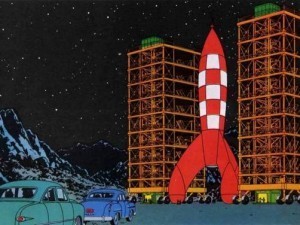The Sun emits a stream of ionized particles known as the solar wind. Generally the solar wind travels at supersonic speeds, meaning they travel faster than sound waves can travel in the wind (though there isn’t much sound in space). But when solar wind collides with the magnetic field of a planet, it slows down significantly. This transition from supersonic to subsonic speeds is known as a bow shock.
Recently the Juno probe crossed Jupiter’s bow shock on its way to the planet. You can hear the transition in the electromagnetic waves measured by Juno. It’s a clear indication that Juno has entered Jupiter’s magnetosphere. Bow shocks are pretty common in astrophysics. Earth’s magnetic field creates one, as do several other planets. Bow shocks can also occur around stars, where the interstellar wind collides with the stellar wind of a star, though interestingly our Sun might not have one.
Juno’s primary mission is to study the electromagnetic and gravitational, so crossing Jupiter’s bow shock is a symbolic milestone, indicating that Juno’s mission is now fully underway.












Comments
I’ve only encountered the term “bow shock” in reading, and I’ve never heard anybody speak the term. I presume that “bow” is as in the bow of a boat, and that it’s pronounced that way.
What is the difference between the “bow shock” our sun may not have and the heliopause that Voyager went through?